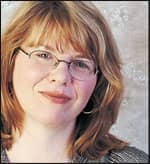Restraining the use of some patients’ unaffected upper limb during the subacute phase following stroke does not appear to generate greater improvements in motor impairment and capacity than standard rehabilitation alone, according to a pilot study published in the June issue of Physical Therapy, the scientific journal of the American Physical Therapy Association (APTA), Alexandria, Va.
Research shows that patients who have arm paresis (partial loss of movement or impaired movement) after stroke initially use primarily the side unaffected by the stroke in order to be as independent as possible, according to a statement released by APTA. Avoidance of the affected upper limb is a behavior called "learned nonuse."*
To help patients overcome learned nonuse, researchers applied the restraining component of constraint-induced movement therapy (CIMT) in combination with standard rehabilitation, says the statement. Classic CIMT is a therapy technique where a restraining device is used on the unaffected limb during 90% of waking time, with the affected limb trained through intensive and repetitive exercises for 6 hours a day during a 2-week period.
According to Ann M. Hammer, PT, Msc, physical therapist researcher and doctoral student at Örebro University in Örebro, Sweden, The study aimed to investigate any differences in motor impairment and capacity between a group of patients wearing a restraining sling and receiving rehabilitation training. and those who were receiving rehabilitation training alone. Researchers found that the changes in the restrained group did not differ from the changes in the standard training group for any of the outcome measures. Both groups improved over time, she added.
Researchers randomly assigned patients,1 to 6 months following stroke, to either the CIMT group or the standard training group. All patients trained five days per week for two weeks.
Hammer said in the statement that the patients enrolled in this pilot study did not get the training amount and intensity that patients have received in other studies where a benefit of CIMT was found to be superior to traditional care. The combined results of this pilot study and other studies suggest the need to match the treatment to the level of severity, but also indicate a continued need to investigate the optimal timing of interventions as well as duration and intensity, she added. The findings will be used to help design future clinical trials that the researchers hope will help them in arriving at a definitive conclusion regarding the clinical implementation of forced use for upper-limb rehabilitation, Hammer said.
* Taub E, Miller NE, Novack TA, et al. Technique to improve chronic motor deficit after stroke. Arch Phys Med Rehabil. 1993;74:347-354.
[Source: APTA]




